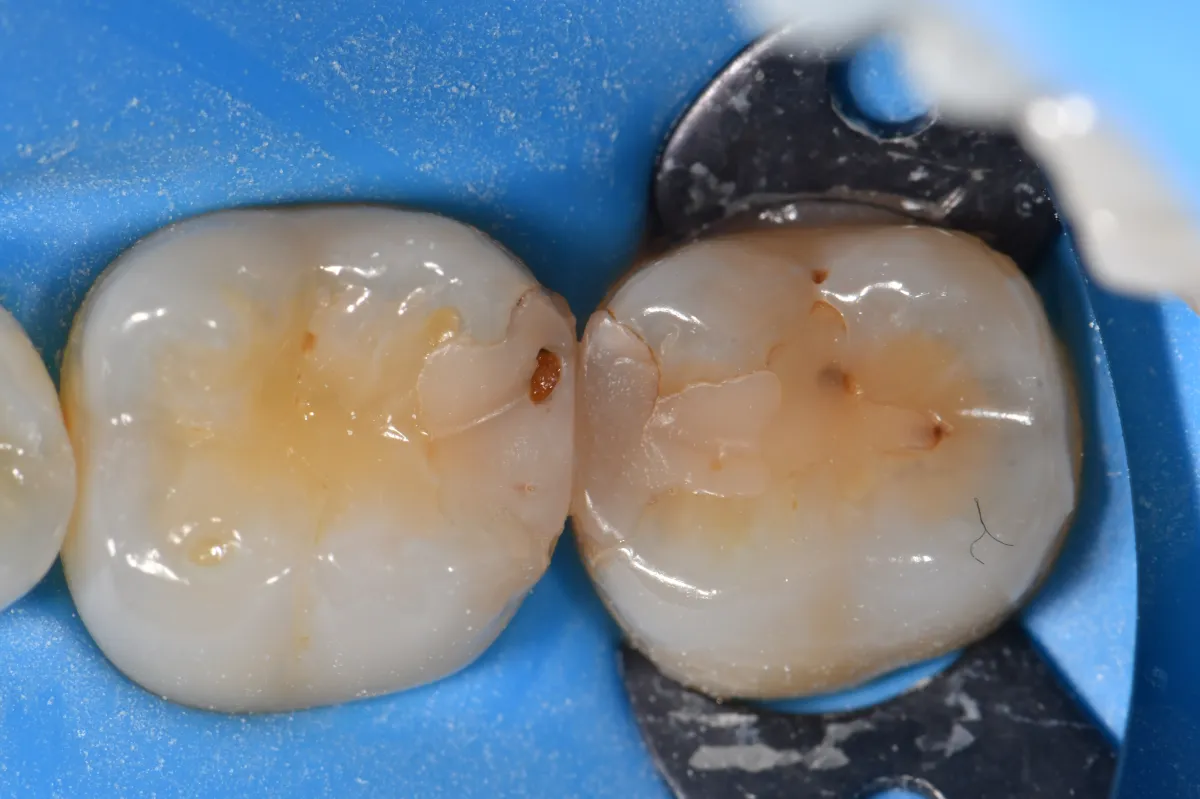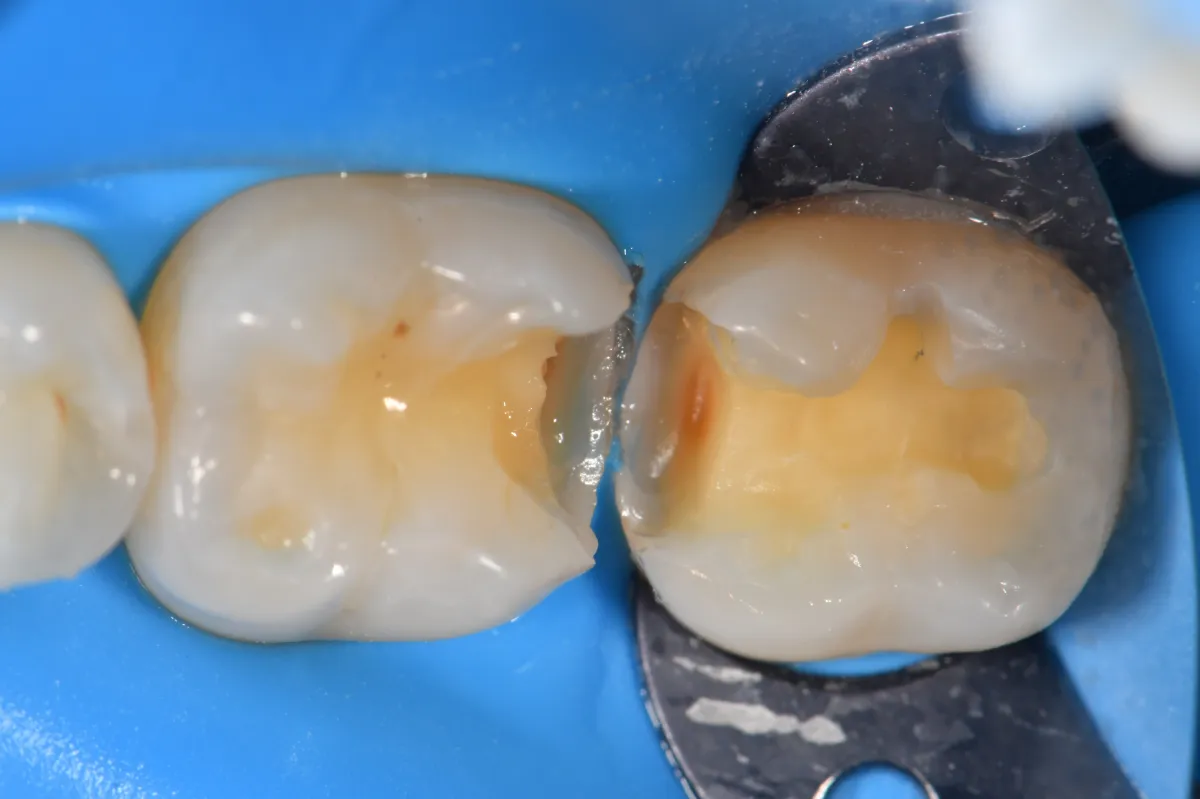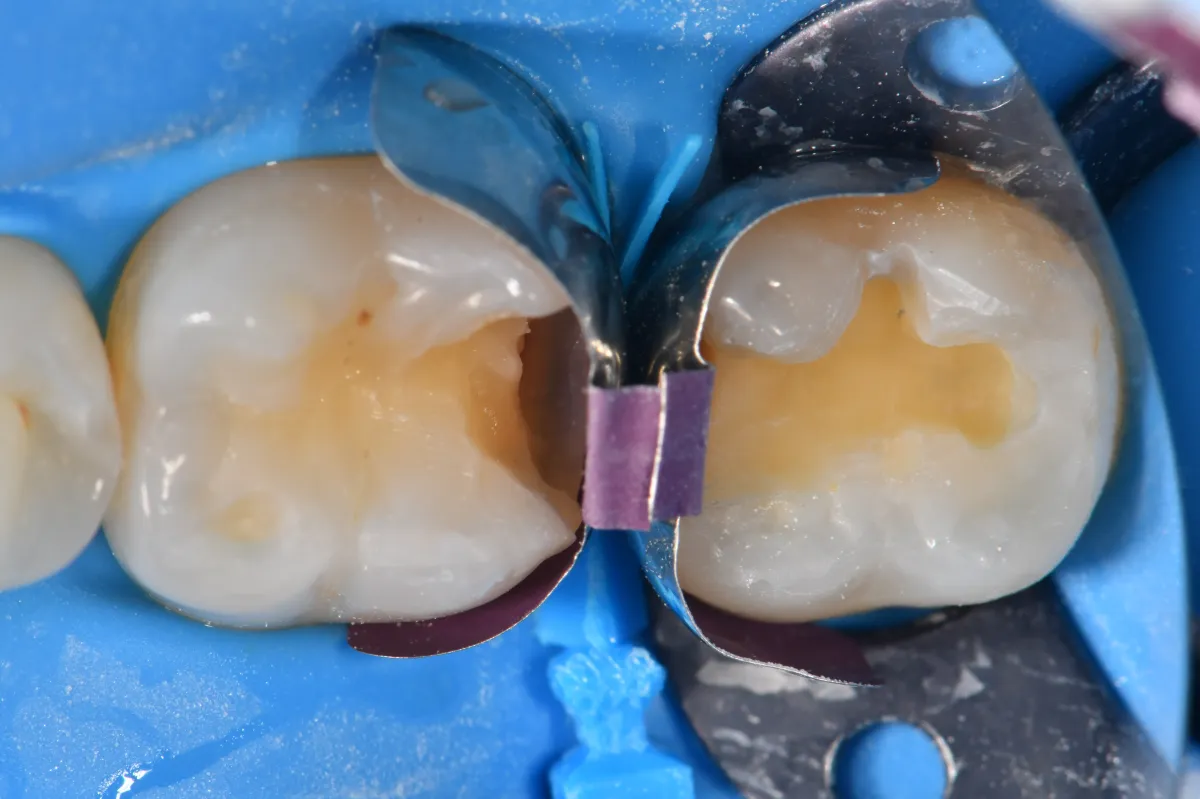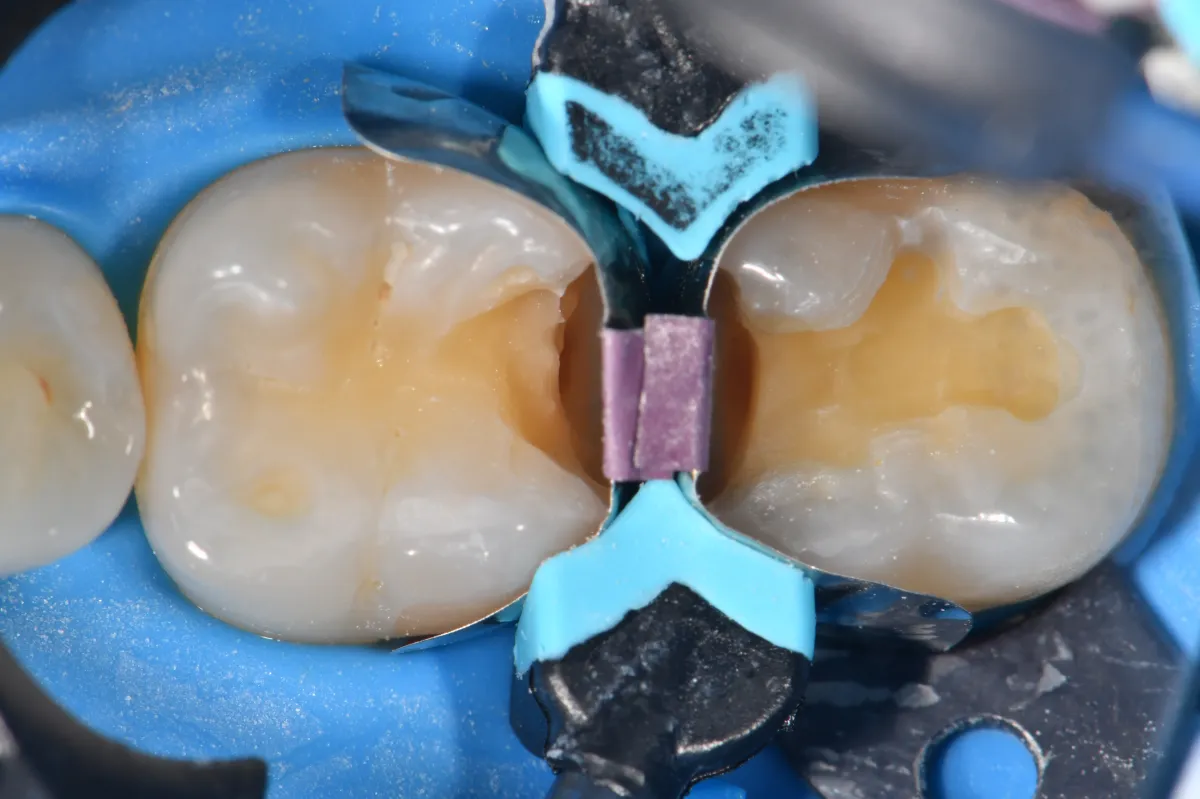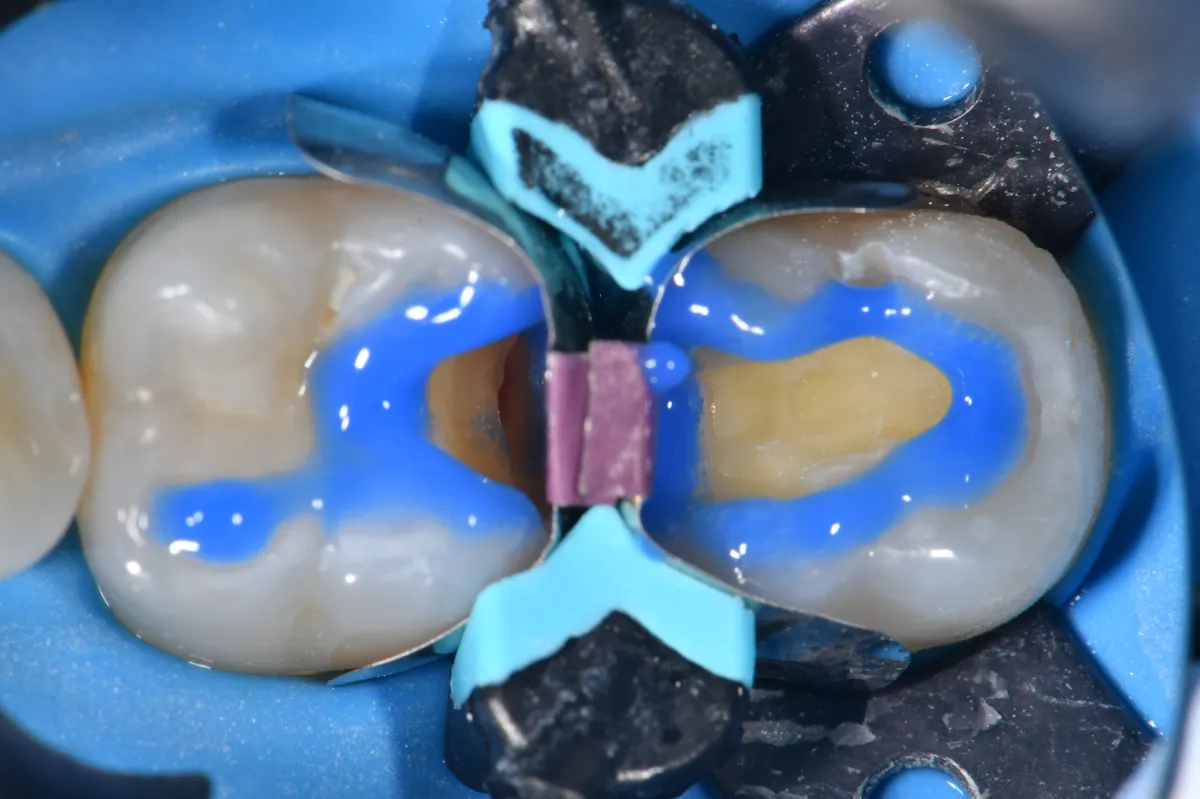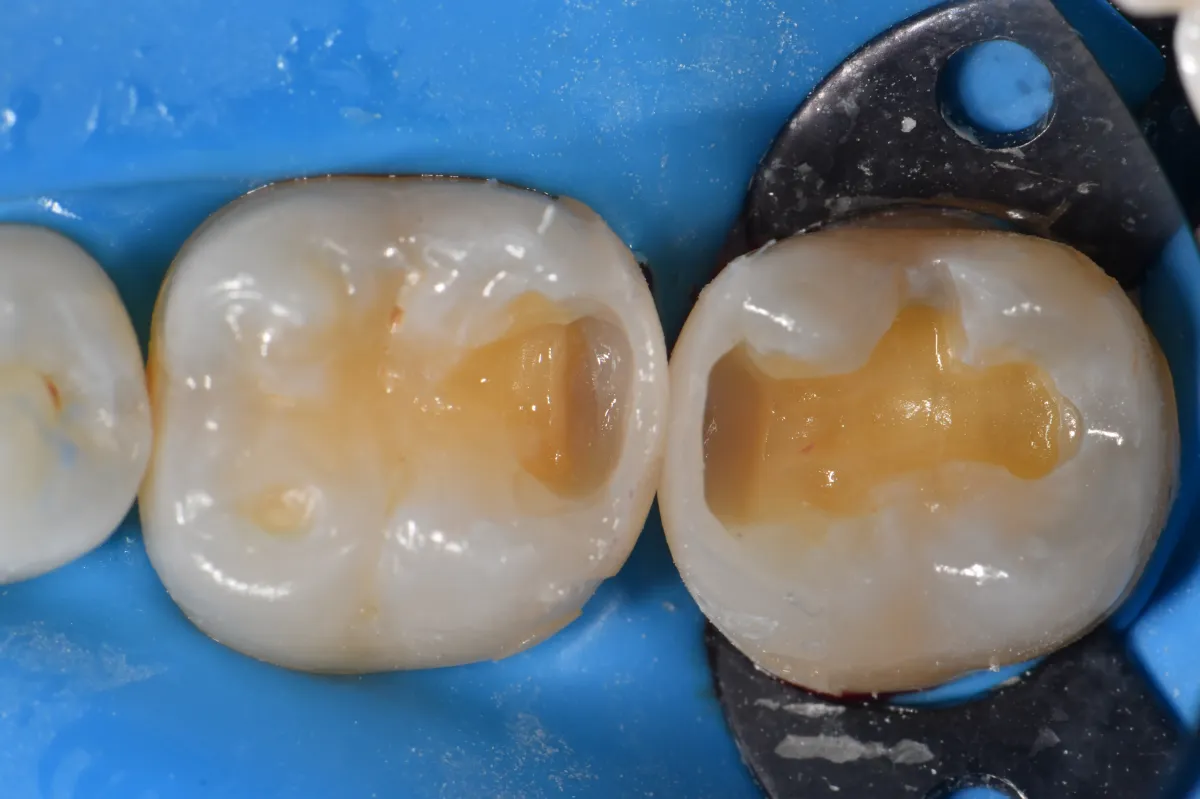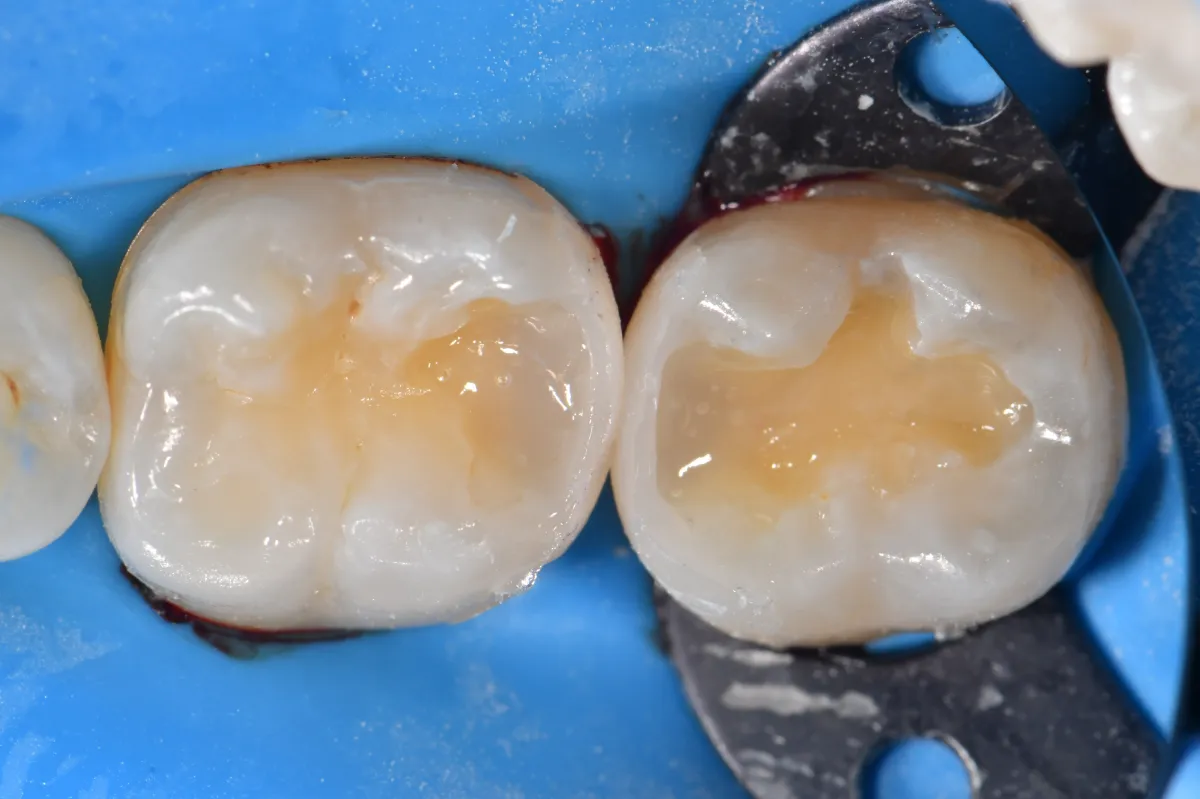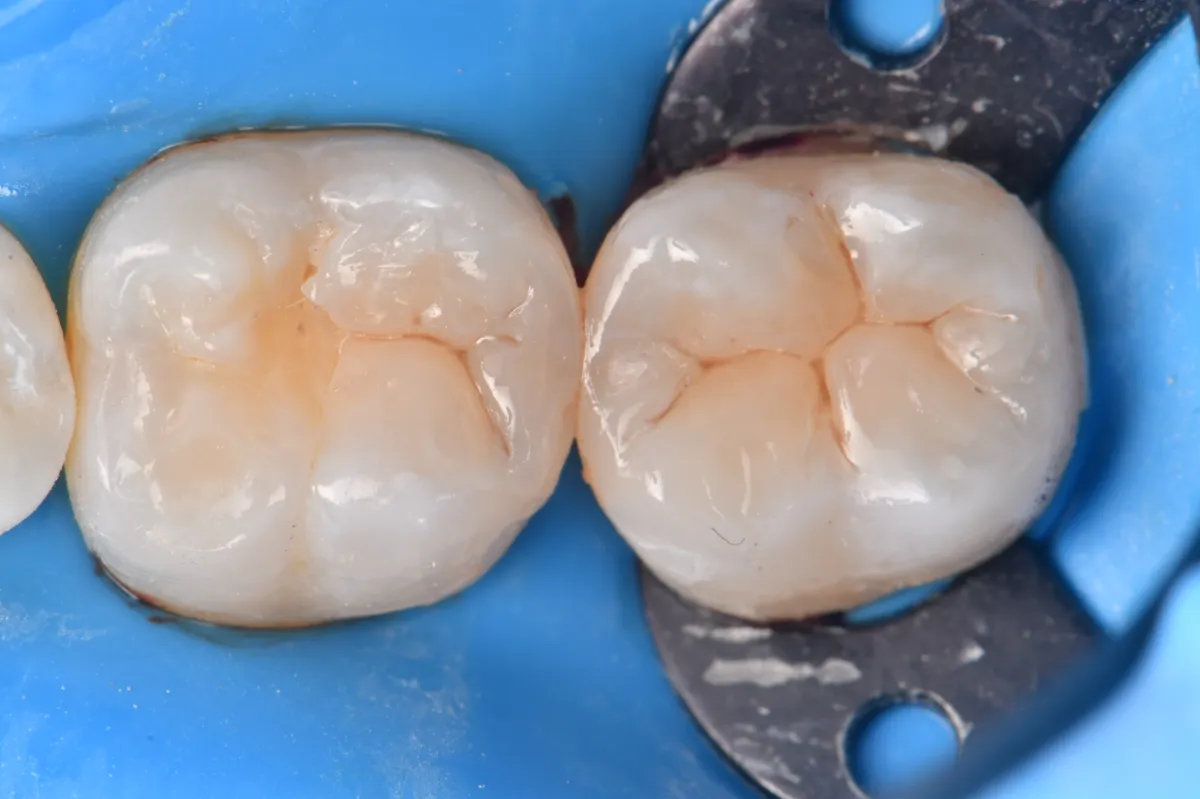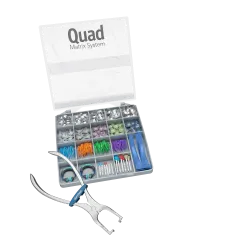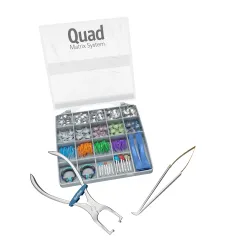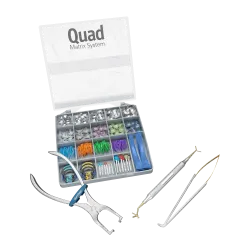A healthy 44 year old female presented to the practice exhibiting marginal failure on old composite restorations #30DO and 31MO along with a small erosive pit noted on the mesiobuccal cusp tip of tooth #30.
Background
Procedure
The patient was anesthetized using 2 carpules of 2% Lignocaine with 1:100,000 epinephrine via an inferior alveolar nerve block and supplemental long buccal nerve block. A rubber dam was placed (figure 1, Nictone Medium, MDC Dental) prior to preparation of teeth #30DO and 31MO, Recurrent caries was noted apical to the restorations in the proximogingival locations. Caries was excavated using
a stainless steel rosebud bur (figure 2, Komet) to the level of hard, affected dentin with the assistance of caries detector dye (Kuraray Noritake). Coronal margins were beveled prior to adhesive substrate optimization using a micro particle abrasion system and 29 micron aluminum oxide (Aquacare). The Quad matrix system (figures 3-4, Garrison) was assembled in a back-to-back matrix band fashion and
secured using the single bifurcated wedge prior to placement of the unique tension ring featuring a driving head which is properly placed between the tines of the wedge, further increasing adaptation in a circumferential manner in the cavosurface margin area. The enamel was selectively etched for 20 seconds with a 33% orthophosphoric acid solution (figure 5, Ultra-Etch, Ultradent Products) prior to rinsing copiously with water. The adhesive used was scrubbed into both enamel and dentin for 20 seconds prior to aggressive air thinning as per manufacturer instructions (Clearfil Universal Bond Quick 2, Kuraray Noritake) and cured with a polywave LED light unit (Valo X, Ultradent Products). The dentin base was lined with 0.25-0.5mm microincrements of Clearfil Majesty Flow A2 prior to marginal ridge reconstruction using Simplishade Bulk (figure 7, Kerr Dental). The matrix assembly was removed and the contact strength and proximoaxial contours
confirmed as ideal prior to proceeding with occlusal layering, which was completed in an oblique, successive cusp buildup technique using Simplishade Bulk (1) to facilitate a stress-reduced restoration
Considerations
According to the author, the preparation is always subjected to micro particle abrasion without the matrix bands in place, as roughening this surface paired with the chemical bonding potential of the acidic adhesive monomer, 10-MDP may lead to bonding of the fresh composite and matrix band, particularly if the Teflon/PTFE non-stick coating has been compromised, leading to difficult band removal and occasional composite fracture. Given adequate interdental space, the use of the Garrison Quad Matrix allows for idealized cervicoproximal adaptation, minimizing overhangs, whilst generating accurate proximoaxial and proximofacial contours and contacts efficiently. The use of appropriately-sized silica and zirconia nanoparticles in Simplishade Bulk mimic the microstructure of enamel, allowing for similar optical refraction properties, resulting in an outstanding chameleon effect with just a single shade.
Reference
1) Deliperi S, Bardwell DN. An alternative method to reduce polymerization shrinkage in direct posterior composite restorations. J Am Dent Assoc. 2002 Oct;133(10):1387-98.

